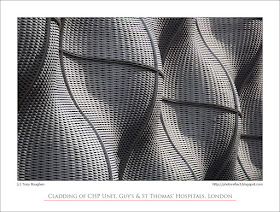You can tell a lot about a society from its shop windows. Some of what they reveal is very straightforward - the products, fashions, food, events etc that are peculiar to the place. But shop windows are also very good at revealing the desires, attitudes, aspirations and insecurities of a culture. For every window display that simply lays out a set of products with price labels attached there is another that is constructed in such a way as to invite a sought-after group of buyers into the premises, and at the same time say to another group that this isn't the place for them.
You know the sort of establishments I mean: designer clothes shops with minimalist displays of contorted models that do everything but show off the clothes for sale, ladies' hairdressers with photographs of women that look like they've been cropped with garden shears and had their hair smeared with a tub of lard, or restaurants with very spare looking interiors featuring lots of leather and wood, the signs and menus with acres of space and small sans serif headings usually featuring no capital letters. Then there are the places that almost disguise the nature of the service that they offer, presumably working on the premise that their prospective customers know what they sell without it being advertised to the world, and those who don't are not the customers they want.
I was thinking about this recently when I was in London. I passed a few "indeterminate" shop fronts, and plenty that made a virtue of being explicit. "MARKS & SPENCER SIMPLY FOOD" (in the reflection above) is unambiguous and I find it unobjectionable. Which is more than I can say for the nearby shop that is called EAT.. That's no typo, by the way: the shop really does have a full stop after its single word name. In a city with a multitude of eateries at all price points that name and its silly full stop would be enough to make this potential customer choose elsewhere to buy his food.
photograph and text (c) T. Boughen
Camera: Lumix LX3
Mode: Aperture Priority
Focal Length: 12.1mm (57mm/35mm equiv.)
F No: f2.8
Shutter Speed: 1/15
ISO:800
Exposure Compensation: 0 EV
Image Stabilisation: On





















